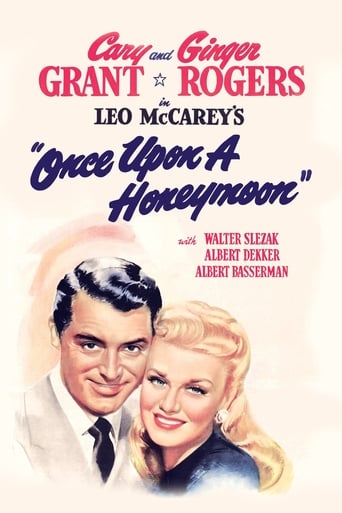

Many, did not like this film but I found it to be charming. The rapport between Cary Grant and Ginger Rogers is outstanding. In this year 2017, I find this film relevant. I never thought this before. Although, I don't know If I had seen the whole film before. It isn't shown very often. But I enjoyed it. I hope we are not taking the current circumstances for granted. Our freedoms are important! A gentle reminder within a charming love story.
... View MoreThis film is great because I love Cary Grant, but I was surprised that in 1942 people were making what appeared to be a comedy about Hitler. It seems similar to a comedy being made about Daesh now: the evil that is killing millions of people across Europe was being treated light-heartedly by US film makers in 1942. However, the sense of humour needed to fight a war of that nature probably helped everyone to focus their efforts to defeat the enemy. The characters of the Nazis seems almost humorous, Cary Grant and Ginger Rogers were their usual wonderful selves, and it was very light and enjoyable. I had to look at the date when it was made, in order to understand the context.
... View MoreAmerican burlesque dancer Ginger Rogers jumps at the opportunity to marry a wealthy Austrian baron (Walter Slezak). Little does she know her new husband is a Nazi. Enter radio news correspondent Cary Grant, who falls for Ginger while trying to do a story on her husband. He follows the pair all over Europe. When she's forced to face just who her husband is and what is really going on in the world, Ginger decides to flee with Cary. A wartime romantic comedy directed by Leo McCarey with two of my favorite stars, Cary Grant and Ginger Rogers. Sounds amazing. Unfortunately it isn't without flaws. But first, some of the good. Cary is charming as ever and has great chemistry with Ginger. Love the measuring scene. For her part, she's pretty and fun. I'm not sure why she was using that terrible accent early on. Her husband knew she was an American so I don't understand who she was supposed to be fooling. I guess she was supposed to be putting on airs, like some kind of society lady or something. It's pretty weird and never addressed. Walter Slezak makes for a fine villain, as he usually did. Albert Bassermann is great in a brief role.The scenes with Cary and Ginger are what works most in the film, particularly in the first hour. On the downside, when the film awkwardly switches to drama it undoes whatever momentum it has built up. I'm not offended, like other reviewers are, over the use of Nazis and anti-Semitism in a (mostly) light comedy. It was all within context and treated appropriately. However, I do think the movie becomes less interesting and certainly less fun in the second hour as it becomes darker. The fact that it goes on so long is what does it the most harm, though. As it is, it's a flawed film but still worth a peek for fans of Grant and Rogers.
... View MoreThis is a very silly movie that has one moment when Cary Grant is measuring Ginger Rogers' figure. It feels more like a metaphor of Grant making love to Rogers running his hands over her body. She doesn't age well, although there are some flattering shots of her. Her accent is a bit disconcerting in the film, but there's no question about it: she can act. The only trouble is, because she doesn't age well she's not easy on the eye. That's why she needs to be well-groomed in every shot because that's the only way you can bear the close-ups of her. Apart from this one provocative moment there is nothing for Cary Grant fans to relish in this film. I would say stay away from it, as it doesn't come anywhere near the quality of 'My Favourite Wife'.
... View More